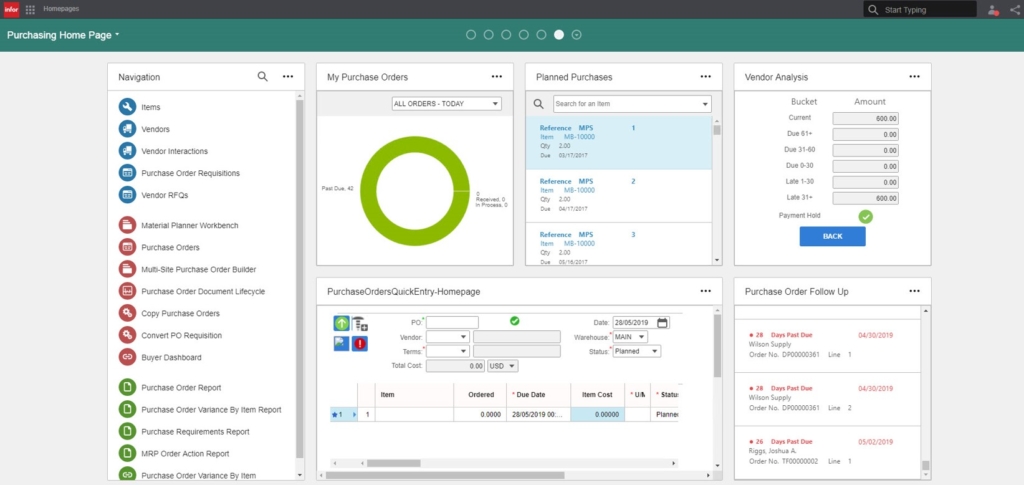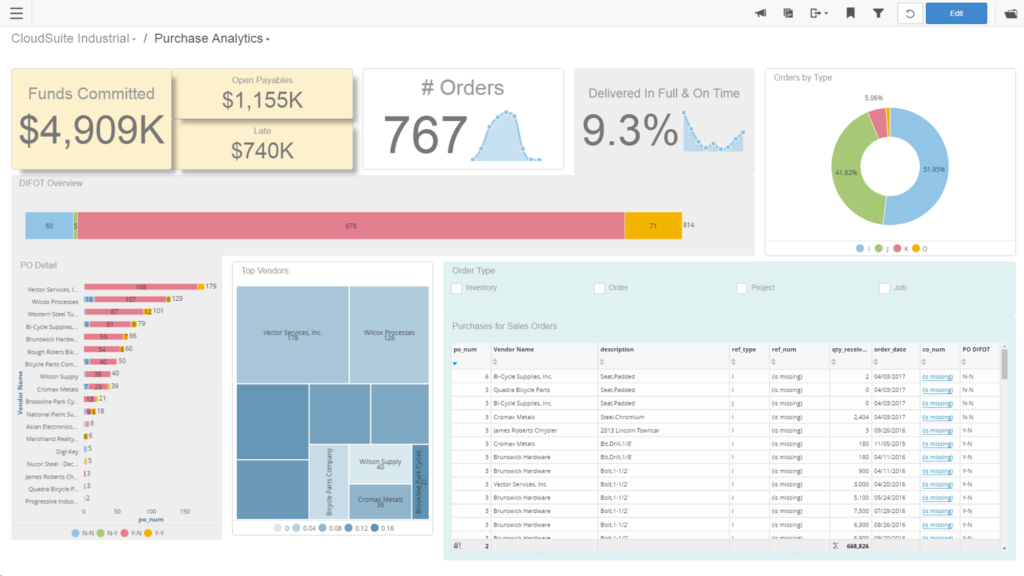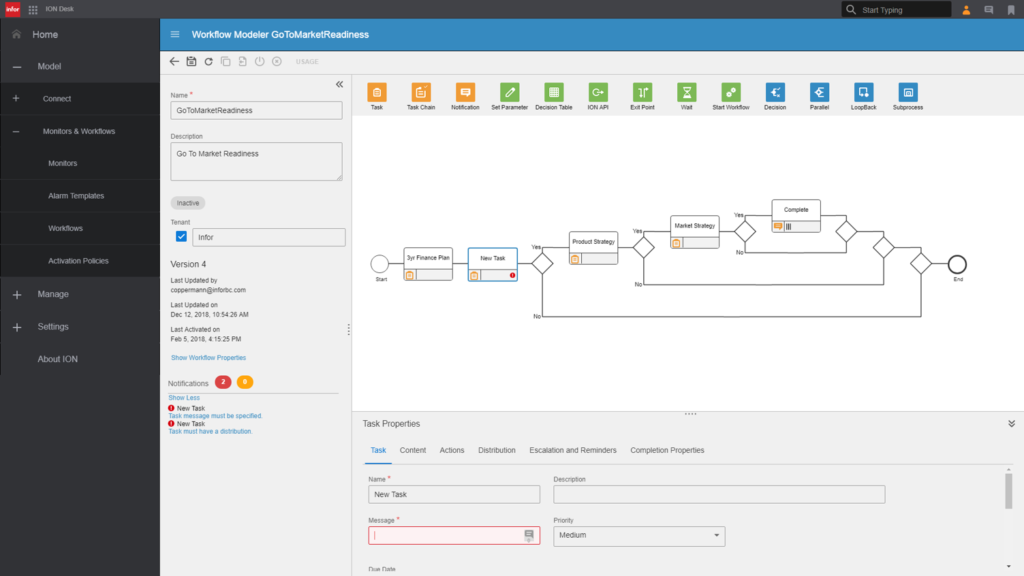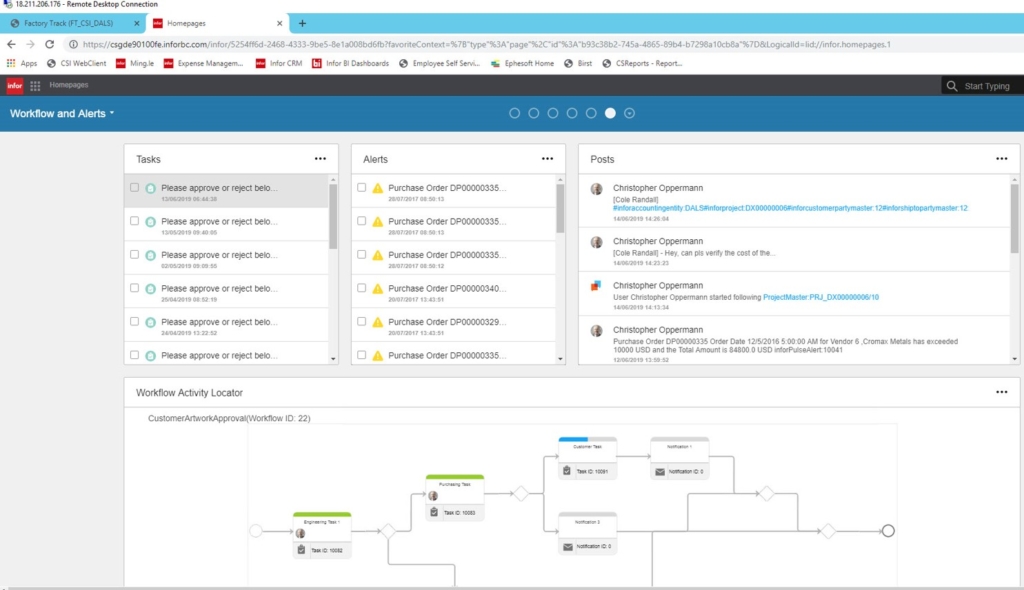
ERP Tips: Use Personalized Dashboards by Role
Today’s ERP applications are very complex – even at the lower end of the market. There are countless screens to navigate and critical information buried deep in the ERP database that few users can find (if they know they even exist to begin with).
Many older ERP applications do not provide the ability to personalize the system for specific roles which makes it difficult for the user to figure out what to do next and they often miss information that would have helped them make critical decisions that impact your bottom line.
Modern day ERP applications like Infor CloudSuite Industrial provide several levels of personalization allowing the user to create their own ERP experience. One example is to consolidate all of the relevant ERP screens, reports, and information on a single home page by role.
For example, someone in purchasing doesn’t necessarily care about what’s happening in the general ledger or production information on the shop floor. Instead, they need information at their fingertips related directly to their job – purchasing. So why not create a customized home screen where they can access ERP tasks they need to complete their daily jobs:
- Item Maintenance
- Vendor Maintenance
- PO Requisitions
- Vendor RFQ
- Material Planner Workbench
- PO Maintenance
- Buyer Dashboards
- PO Report
- PO Variance Report
- PO Requirements Report
- MRP Action Report
Another tip: embed the main screen they use all the time directly on their home screen. For example, someone in purchasing probably visits the Purchase Order Entry screen dozens (if not hundreds) of times each day. Why not embed this task directly on their home screen. It can save a few mouse clicks and maybe 10 seconds but that can add up to a huge efficiency improvement over time. Consider how much time you’d save if every user had a similar dashboard across your enterprise – engineering, manufacturing, supply chain, material planning, accounting, sales, etc.

Provide Insights via Dashboards
Next, create meaningful dashboard graphs, charts, and other visuals to help the user understand what’s happening and clearly notify them of situations that require their attention.
For purchasing, this could include a summary graph of purchase orders past due, received, or in process with a drop-down to easily filter the results by period (today, this week, this month, etc.). You could even provide a summary of planned purchase orders directly on their home screen where they can quickly filter and drill-down to the planned purchase order transactions for more detail or to release the purchase order. Further, you could provide a summary view of purchase payments to see which are current and which are late by time bucket. You could even provide notifications on their home screen for specific purchase orders that require their attention.

Personalized Workflows
Another key to personalizing the ERP experience is to build out workflows. These can be specific to your business and even to specific users and how they want the data to flow between various ERP tasks and processes.
Consider how purchasing may want to define a workflow whereby a purchase requisition is routed to the purchasing manager if it meets certain criteria such as the items on the requisition, the overall total cost, or even based on the department making the request. You can therefore route specific requisitions to different managers based on these criteria. You could even have an override where larger requisitions go through a more formalized approval process that could require additional requests for quotes (RFQ) from multiple vendors.
Workflows are a great way to eliminate spreadsheets as the work can be managed within the ERP application making it more efficient and less prone to human error. After all, it’s very easy to miss a step in a complex workflow if it’s not automated and automated workflows ensure that all users (present and future) will follow the desired processes since the system forces each step in the process to occur the way it’s intended.
Alerts, Notifications, and Social Collaboration
Older ERP systems have alerts and notifications but only modern day ERP systems like Infor CloudSuite Industrial provide more advanced tools to manage daily work. Consider the Infor CloudSuite Industrial Social Collaboration tool which is embedded in the ERP system allowing users to communicate inside ERP and not via email or other platforms where the background information related to decisions is often stored and unavailable for other users.
Infor CloudSuite Industrial allows users to manage daily tasks directly from the ERP system with alerts to notify them of actions they need to take and posts from other users related to their work. Consider a requisitions to purchase a new piece of equipment – this might take a substantial amount of back-and-forth communication between the requester and the purchasing department. All of this information can be captured using social collaboration tools inside the ERP as back-up to the decision whether to make the purchase, to wait to buy the equipment, or to solicit additional information or vendor requests for quotes.

Conclusion
Legacy ERP software makes it difficult to provide a personalized experience for users. They are forced to navigate complex menu structures and waste time searching for information they need to make insightful decisions on a regular basis.
Modern-day ERP systems like Infor CloudSuite Industrial provide a completely different experience allowing the system to be tailored for specific roles in the organization saving time and improving efficiencies with critical business information displayed visually where the user needs it so they can act instead of react to situations.
Manufacturers don’t realize how much time they are wasting and how many bad decisions their staff are making simply because the ERP system they depend on hasn’t kept up with the times. Manufacturers should carefully weigh the benefits of moving to a modern ERP platform capable of providing a personalized experience for users.
Contact SolutionsX for more information on how to build a personalized ERP experience for your users.



